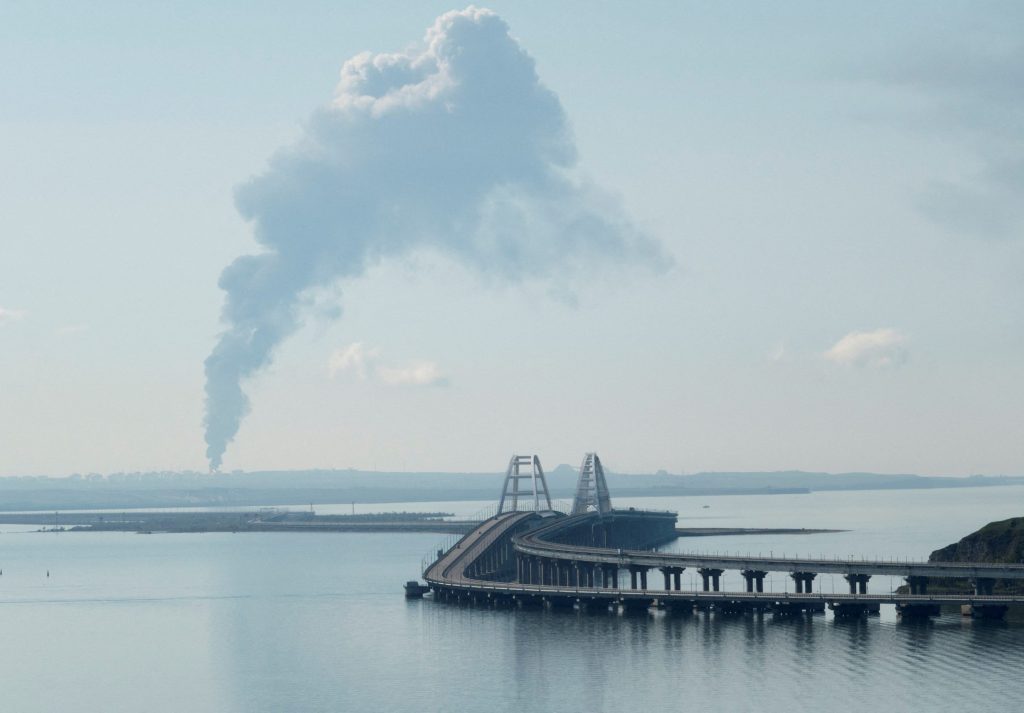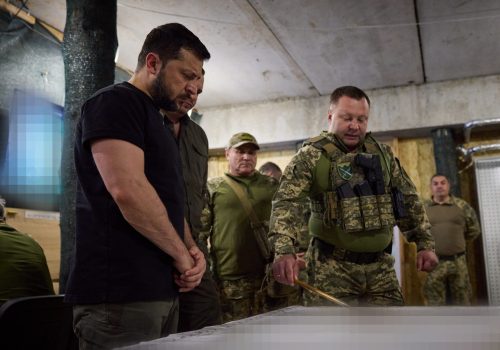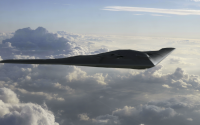
Ukraine’s counteroffensive is making real progress on the Crimean front

More than three months since the start of Ukraine’s much-hyped counteroffensive, Ukrainian forces have only managed to liberate a tiny portion of the territory currently under Russian occupation. However, the success or failure of the campaign cannot be measured in square kilometers alone. Beyond the front lines, the Ukrainian military is steadily reducing Russia’s ability to wage war and is methodically creating the conditions for future advances. This progress is nowhere more evident than in Crimea.
In recent weeks, the Ukrainian military has carried out a number of strategically significant attacks across the Crimean peninsula, which has been under Russian occupation since early 2014 and has served as a key logistics hub for current invasion. These operations are enabling Ukraine to threaten the supply lines of the Russian army in southern Ukraine, while also making it increasingly difficult for the Russian navy to maintain a presence in the northwestern Black Sea.
Employing a combination of Ukrainian-produced drones, Western-supplied cruise missiles, and commando raids, Ukraine has struck a series of high value targets in Crimea including Russian air defense systems, communications outposts, transport hubs, airfields, and ammunition stores. A number of strikes have reportedly targeted senior Russian officers. The growing frequency of these Ukrainian offensive operations in Crimea has made a mockery of earlier Russian attempts to claim that any attacks on the occupied peninsula represented a “red line” for the Kremlin.
Subscribe to UkraineAlert
As the world watches the Russian invasion of Ukraine unfold, UkraineAlert delivers the best Atlantic Council expert insight and analysis on Ukraine twice a week directly to your inbox.

-
-
-
This field is for validation purposes and should be left unchanged.
Some of Ukraine’s recent attacks on the Crimean front have been spectacular enough to garner international headlines. In mid-September, Ukraine struck a warship and submarine while they underwent repair works in the Russian Black Sea Fleet’s home port of Sevastopol. According to an intelligence update by Britain’s Ministry of Defense, the Minsk landing ship was “almost certainly functionally destroyed” in the attack, while the Kilo class Rostov-on-Don submarine “likely suffered catastrophic damage.” Furthermore, the task of removing wreckage from the dry docks in Sevastopol will likely take months, creating major challenges for fleet maintenance.
Ukraine went even further on September 22, launching an audacious daylight attack on the headquarters of the Russian Black Sea Fleet in the heart of Sevastopol. This resulted in a number of direct hits that caused serious damage to the symbolically important building. Ukraine’s success was a major embarrassment for Putin, exposing the ineffectiveness of Russia’s air defenses and underlining the vulnerability of the Black Sea Fleet. In a sure sign of Moscow’s extreme displeasure, the Kremlin-controlled Russian state media initially ignored the humiliating attack entirely.
The steady depletion of Russia’s air defenses on the Crimean peninsula in recent months may be an indication of Ukraine’s future intentions. With the skies over occupied Crimea increasingly undefended, Ukraine will likely seek to expand attacks on Crimean transport and munitions hubs that are critically important for the Russian war effort in southern Ukraine. This could deprive Russian forces of resupply at a critical moment in the fighting along the front lines in Ukraine’s Kherson and Zaporizhzhia regions.
While the situation for Russia’s occupation forces in Crimea is not yet critical, the outlook is far from promising. Reports following Ukrainian President Volodymyr Zelenskyy’s recent White House meeting with US President Joe Biden indicate that the United States is now preparing to supply Ukraine with ATACMS cruise missiles for the first time, though the exact range is yet to be announced. The delivery of ATACMS missiles would enable the Ukrainian military to strike targets throughout Crimea. Ukraine is also developing powerful new underwater drones that will significantly increase the threat to Russia’s Black Sea Fleet. At this point, there can be little doubt that Ukraine is ultimately aiming to make Crimea untenable for the Russian military.
Eurasia Center events

Ukraine has also seized the initiative at sea, using innovative naval drones to target Russian warships and other shipping. In early August, a Ukrainian naval drone attack seriously damaged the Russian landing ship Olenegorsky Gornyak in the eastern Black Sea close to the Russian naval base at Novorossiisk. The attack highlighted Ukraine’s ability to hit targets hundreds of miles from the nearest Ukrainian-controlled coastline. Numerous smaller Russian warships have also reportedly been damaged in similar attacks during the past few months.
This unfolding campaign against the Russian naval presence in the Black Sea is crucial for Kyiv’s efforts to unblock Ukraine’s southern ports and reopen an economic lifeline for the country’s maritime trade to global markets. In defiance of Russia’s naval blockade, the Ukrainian authorities announced the launch of a new shipping corridor in August that runs down the western shoreline of the Black Sea from the port city of Odesa. The viability of this corridor hinges on Ukraine’s ability to deter Russian warships from intervening. By September 26, seven vessels had sailed from Odesa via the new sea route.
Ukraine’s increasingly ambitious offensive operations on the Crimean peninsula and in the Black Sea are part of a far larger counteroffensive picture. In parallel to the attacks being carried out on the Crimean front, Ukraine is also hitting targets with increasing regularity inside Russia itself.
Drone strikes in Moscow have become an almost daily occurrence in recent months, forcing the Russian military to withdraw limited air defense systems from the front lines in Ukraine in order to redeploy them in the Russian capital. Suspected Ukrainian drone activity has also repeatedly forced Moscow’s international airports to shut down, causing economic damage and providing the Russian public with a taste of wartime disruption. More significantly, a series of drone attacks on airfields deep inside Russia have led to the destruction of multiple warplanes.
Ukrainian commanders recognize that today’s complex attrition tactics will only get them so far, and are well aware that they must eventually break through Russia’s defenses and liberate their entire country if they wish to secure a meaningful peace. Nevertheless, any analysis of the ongoing Ukrainian counteroffensive is incomplete without an awareness of the broader attrition campaign that is currently underway far from the relatively static front lines in eastern and southern Ukraine. The pace of the Ukrainian advance remains slow, but developments elsewhere may prove equally important in determining the future course of the war.
Peter Dickinson is editor of the Atlantic Council’s UkraineAlert service.
Further reading
The views expressed in UkraineAlert are solely those of the authors and do not necessarily reflect the views of the Atlantic Council, its staff, or its supporters.

The Eurasia Center’s mission is to enhance transatlantic cooperation in promoting stability, democratic values and prosperity in Eurasia, from Eastern Europe and Turkey in the West to the Caucasus, Russia and Central Asia in the East.
Follow us on social media
and support our work
Image: A view across the Kerch Strait shows smoke rising above a fuel depot near the Crimean bridge in the village of Volna in Russia’s Krasnodar region as seen from a coastline in Crimea, May 3, 2023. (REUTERS/Stringer)







